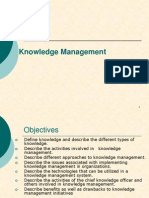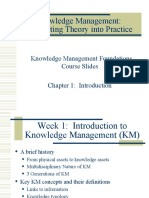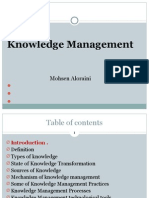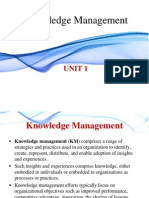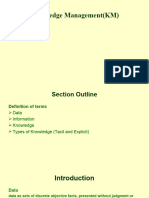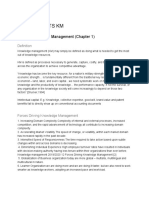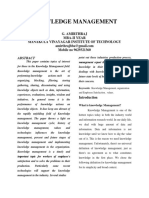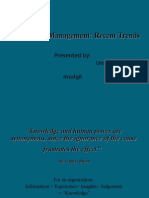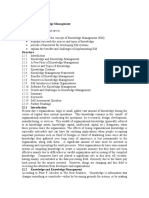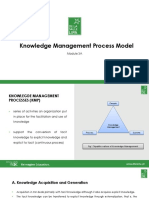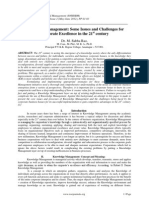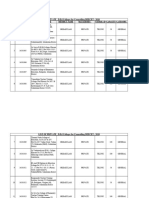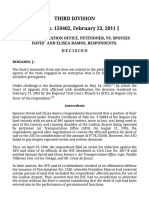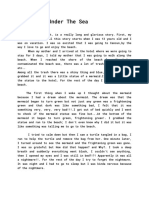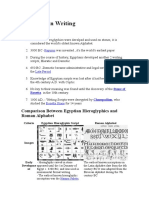0% found this document useful (0 votes)
103 views25 pagesKNOWMAN - Module 1
The document discusses the conceptual progression of data to knowledge. It explains that data becomes information when relationships are understood, and information becomes knowledge when patterns and their implications are understood. It then describes two types of knowledge: tacit knowledge stored in people's brains and explicit knowledge contained in documented forms. The interaction between these knowledge types through socialization, externalization, combination, and internalization drives organizational knowledge creation. The rest of the document outlines knowledge management in terms of definition, aspects, pillars, and measurement challenges.
Uploaded by
maosalvadorCopyright
© © All Rights Reserved
We take content rights seriously. If you suspect this is your content, claim it here.
Available Formats
Download as PDF, TXT or read online on Scribd
0% found this document useful (0 votes)
103 views25 pagesKNOWMAN - Module 1
The document discusses the conceptual progression of data to knowledge. It explains that data becomes information when relationships are understood, and information becomes knowledge when patterns and their implications are understood. It then describes two types of knowledge: tacit knowledge stored in people's brains and explicit knowledge contained in documented forms. The interaction between these knowledge types through socialization, externalization, combination, and internalization drives organizational knowledge creation. The rest of the document outlines knowledge management in terms of definition, aspects, pillars, and measurement challenges.
Uploaded by
maosalvadorCopyright
© © All Rights Reserved
We take content rights seriously. If you suspect this is your content, claim it here.
Available Formats
Download as PDF, TXT or read online on Scribd
/ 25



